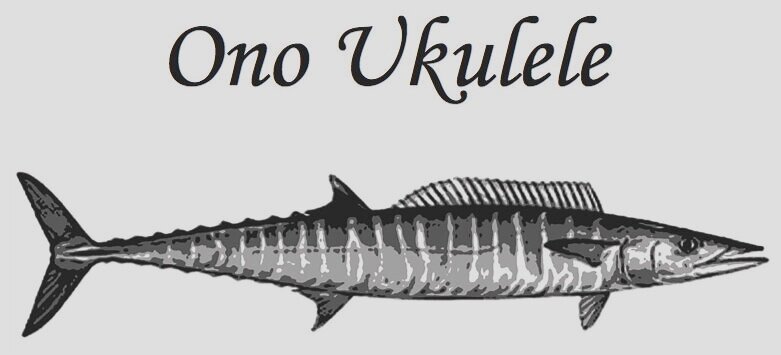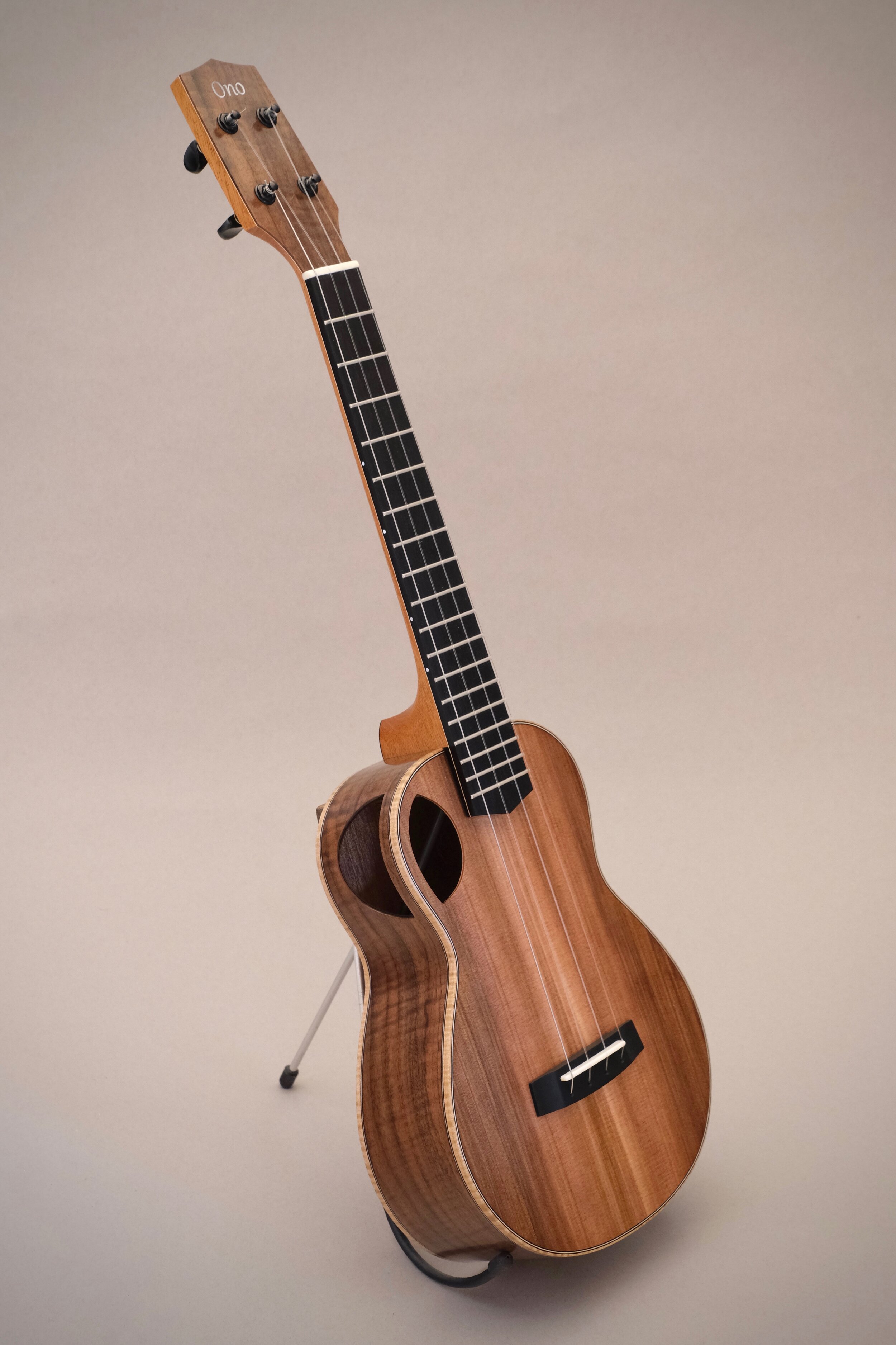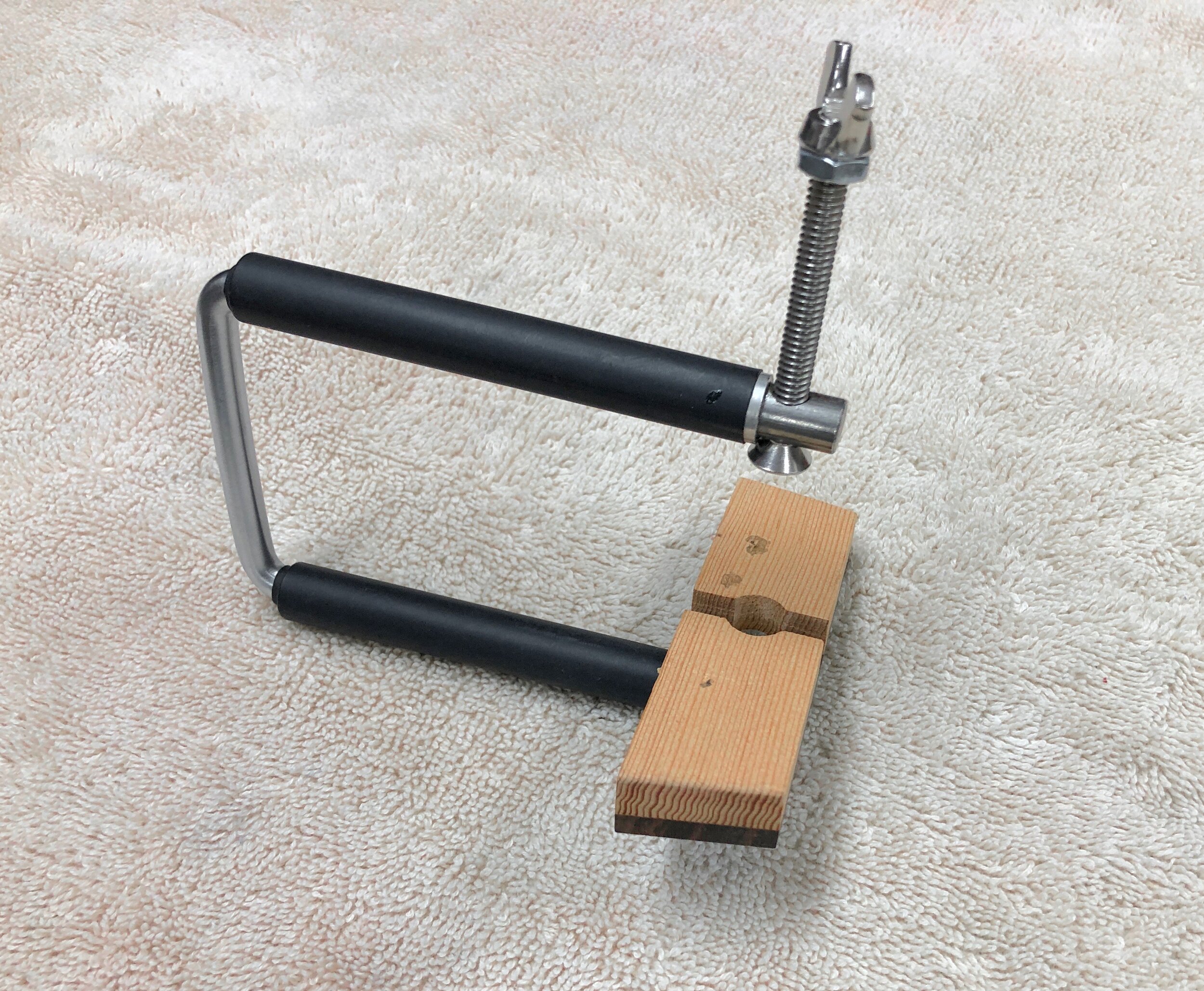This is the result of an R&D project that I’ve been working on for a few months. The goal is to maximize the area of the top that can vibrate and produce sound.
Conventional top bracing includes transverse braces above and below a central sound hole:
The transverse braces are are there not only to reinforce the top around the sound hole but primarily to prevent deformation of the entire structure due to string tension, which makes the neck a powerful lever to rotate the heel block, which in turn can deform the body and the top by forcing the rims to deflect in and out with respect to the centerline. However, they inhibit sound production because they largely muffle the top at and above the lower transverse brace. So, how can we eliminate the transverse braces while preserving the strength and shape of the body? Here’s one way:
Obviously, if you take away the transverse braces you have to add something else that does the same job to keep the instrument from eventually folding up on itself. I lifted this carbon strut idea from Rick Turner, who has used it in some of his acoustic guitars. He refers to them as “flying buttresses” and says that he got the idea from gazing at Gothic cathedrals in France. That’s a great story and, whatever the inspiration, the struts stiffen the structure remarkably. As the neck and heel block want to rotate under string tension, that force is resisted by the connection through the heel block to the struts and down to the anchor points on the back. This is a strong point in large measure because of the attachment to the stiff, laminated back. The result is that the top and its bracing are largely decoupled from a structural role and are freed-up to be optimized for tone. Then, the only braces that are necessary for the top are two longitudinals to resist rotation of the bridge and, of course, the bridge plate.
Transverse top braces also help to keep the top curved at the correct compound radius. To help maintain the curvature without cross braces, I've used a two-layer lamination. After some experimentation, I've been able to make laminated tops that are no thicker than a single layer top. The center joints are skewed so that there is no weak point along the centerline and to inhibit cracking around the sound hole. The layers are glued with vacuum pressure in a radius dish so that the curvature is exactly what it should be. One of the bugaboos of laminating tops is the question of whether the glue gets in the way of the vibrational properties of the wood. I've got the process refined to the point where a small amount of glue does the job and adds just 2g to 3g to a tenor top that weighs about 60g without bracing. That is perhaps a third of the weight that is saved by eliminating most of the bracing so, in theory, the ability of the top to vibrate should be improved by reducing inertia. Theory aside, the tap tones have been very nice and give up nothing to single layer tops.
The new design works well with a conventional, central sound hole or various unconventional sound hole placements. Unconventional sound holes are sometimes favored by people who play just for themselves and their cats because they can be configured to direct a little more of the sound toward the player rather that toward a listener facing the player. The combination of the flying buttress structure and the laminated top, sides and back lets the builder and owner choose sound hole locations, shapes and sizes to optimize sound without limitation by structural issues.
I’ve always built with cantilevered fretboards in order to eliminate whatever inhibiting effect the fretboard has upon vibration of the top. The flying buttress design makes it possible for the upper bout to vibrate to an extent that can’t possibly be achieved if there are transverse braces. Thus, the cantilevered fretboard has really come into its own as an important feature that makes a significant contribution to the goal of allowing the entire top to vibrate and to optimize the production of sound.
Wise people have occasionally been known to observe that instrument builders sometimes do things differently in ways that add work and cost but, arguably, don't improve the outcome. I’ve now completed and evaluated tenors and one concert that use this new technique and can say with growing confidence that the combination of the flying buttress arrangement and the laminated top justifies the extra investment of time and materials. In instrument building, there is always another way to skin the cat and we have to be careful not to make it appear that we think that our own way is the only way or the best way. So, no such claim here but this new design is, at the least, promising enough to put out into the market and to continue to develop.



























